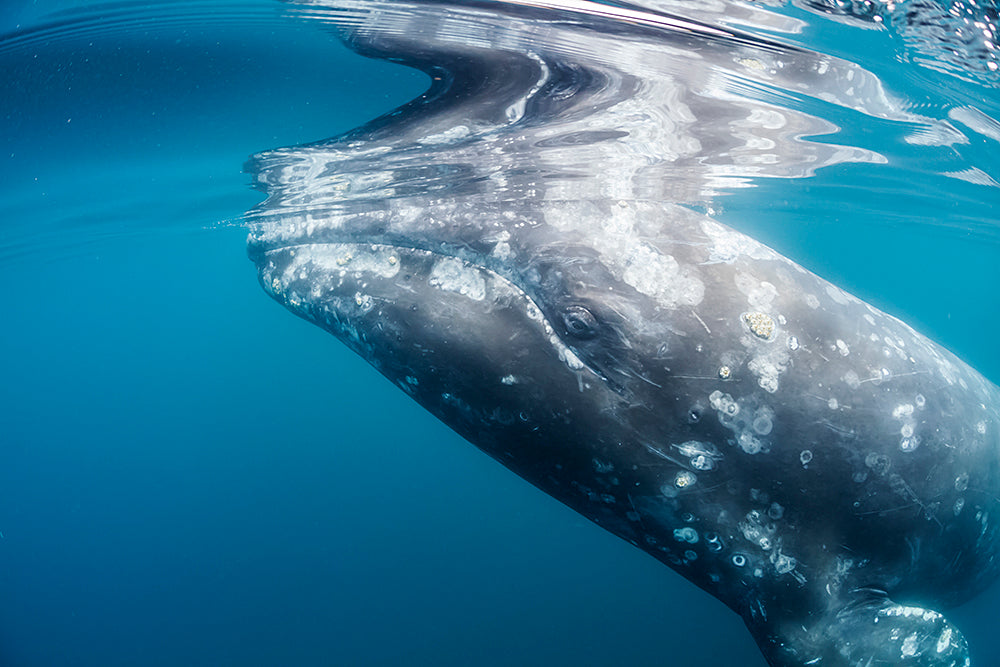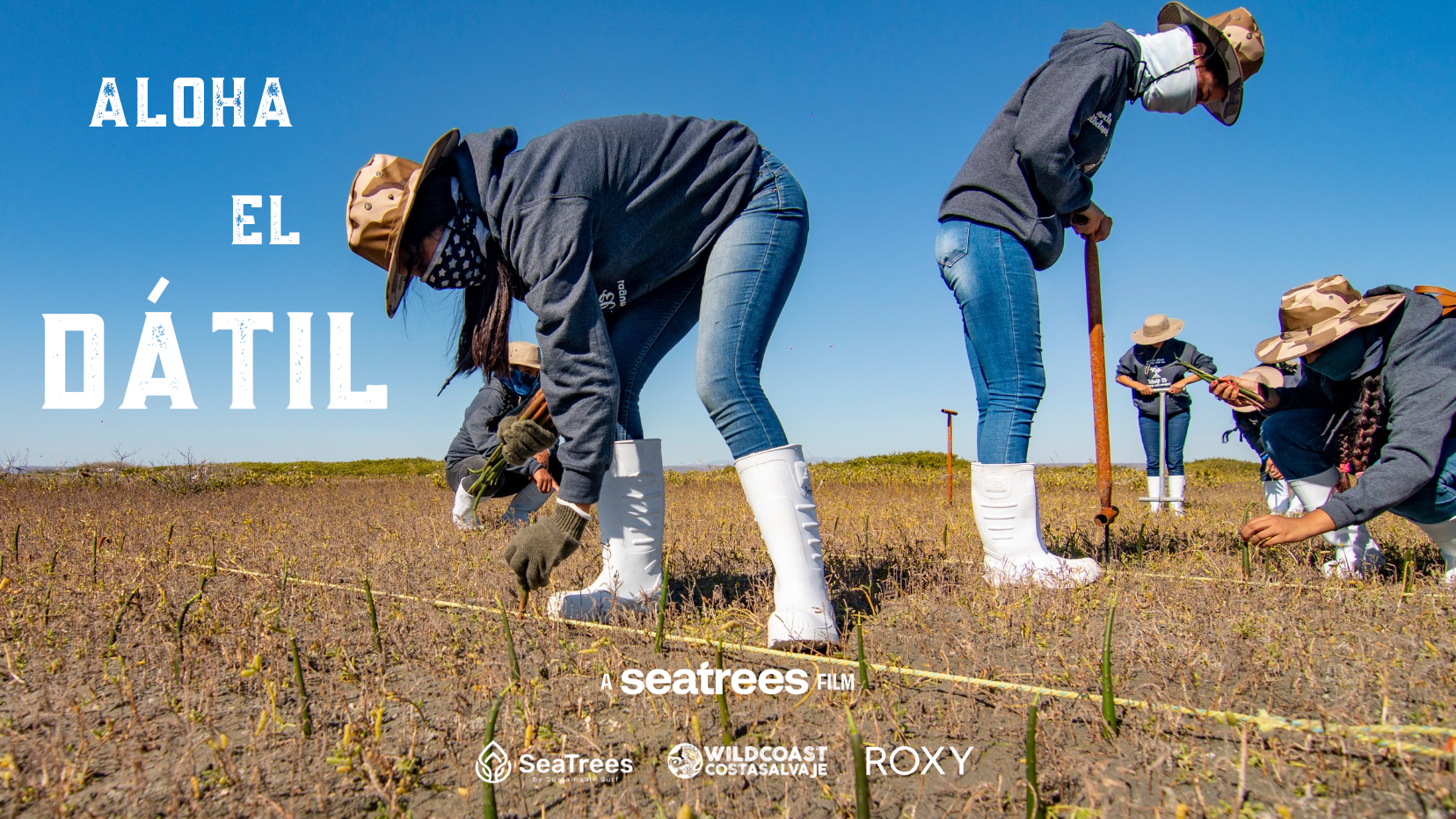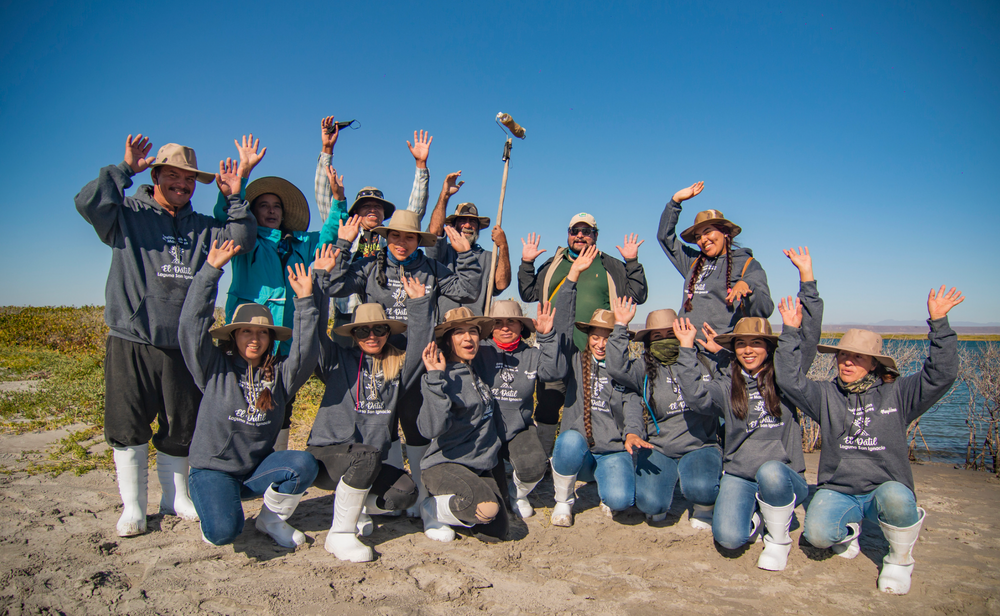
Enhancing coastal resilience by planting and protecting mangrove ecosystems.
Laguna San Ignacio is an UNESCO World Heritage Site and the world’s last undeveloped California gray whale breeding lagoon. It is located within El Vizcaíno Biosphere Reserve, a 6.2 million acres natural protected area.
Mangroves play a significant role in the region’s local economy, provide nursery and feeding grounds for commercially important fisheries and other wildlife, and buffer coastal communities against storm surge and sea level rise.
Together, SeaTrees and WILDCOAST have begun the process of planting 100,000 mangrove trees across 25 acres of mangrove habitat in collaboration with the “Mujeres de El Dátil." This group of women are from the local area and have witnessed the degredation of this critical habitat first hand, and are now helping us restore the mangrove forest in the protected waters of Laguna San Ignacio.
Women-led Conservation
Most families in the Laguna San Ignacio area depend on ecosystem services provided by mangrove forests like fisheries. El Vizcaíno Biosphere Reserve is home to certified sustainable fisheries of great economic value.
The communities of the lagoon are active fishing cooperatives, whale watching outfitters, and small-scale ranching. Climate change and its increasingly intense tropical storms and sea level rise pose emerging threats to this region.
WILDCOAST works with two local communities in Laguna San Ignacio to restore its mangrove forests. We have partnered with the “Mujeres de El Dátil,” who were trained in 2019 by WILDCOAST on mangroves environmental services, seedlings collection and planting techniques, as well as monitoring and maintenance of restored sites.
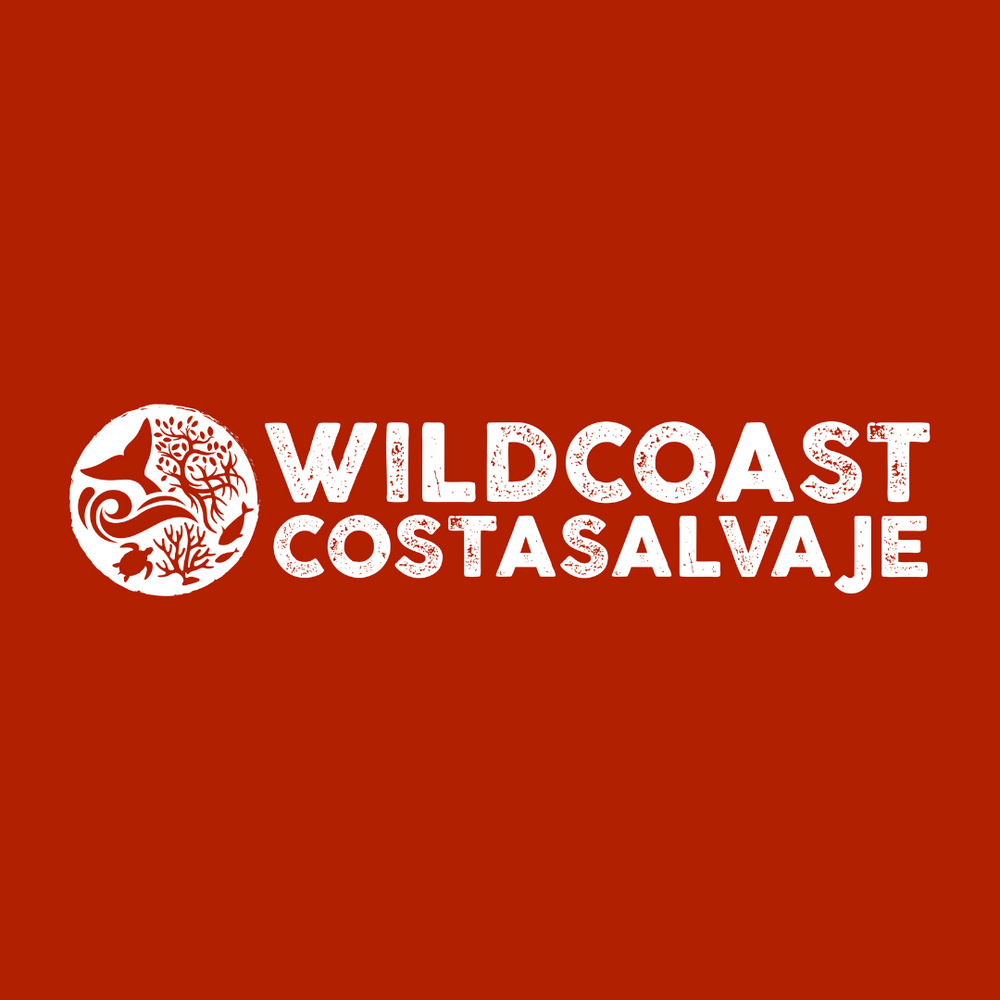
WILDCOAST
SeaTrees has partnered with WILDCOAST, a nonprofit organization founded in 2000 that focuses on conserving coastal and marine ecosystems and addressing climate change with natural solutions.
A little further reading...
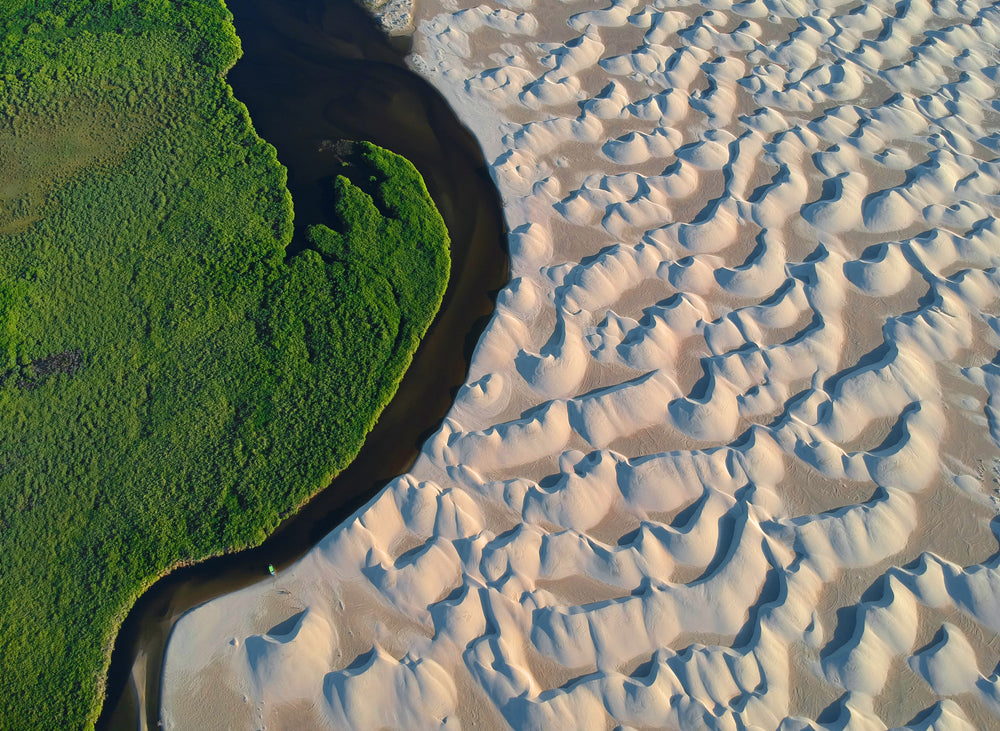
Threatened by Sea Level Rise
Climate change is already affecting Laguna San Ignacio ecosystems and communities. Sea level rise, along with the high tides present in Laguna San Ignacio, intensified currents in estuaries that, in turn, generated erosion of the main channels.Without the first protection barrier that red mangroves offer, there is a risk for greater habitat loss.
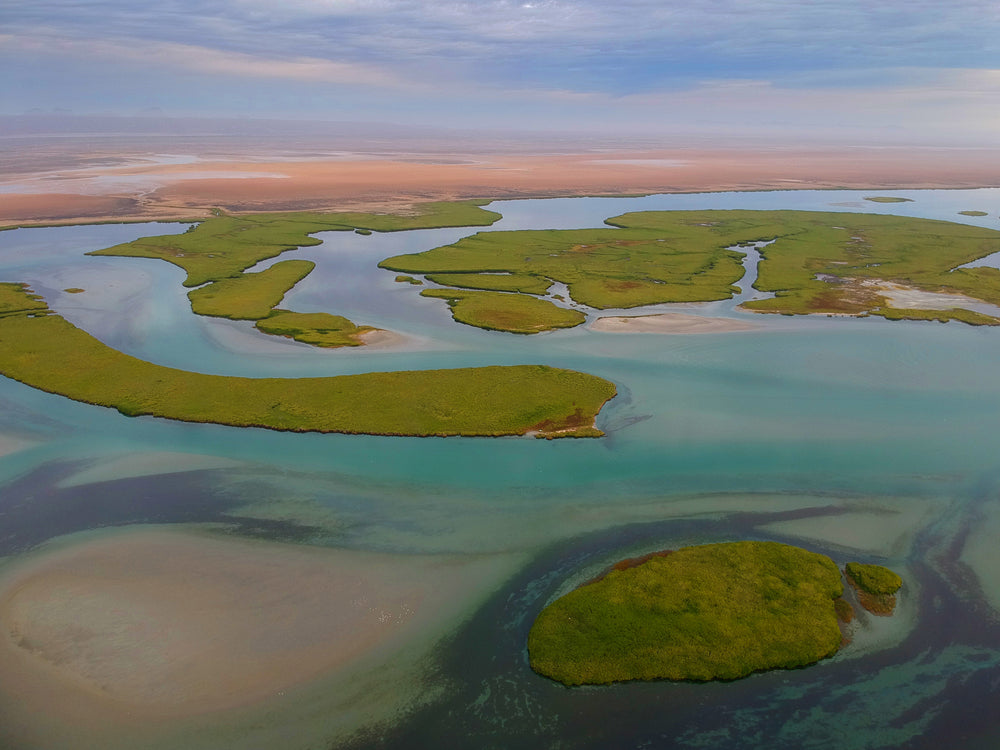
Sustainable Development
This project provides living-wage employment and training opportunities for the local community, empowers gender equity, protects the area from increased climate change impacts, and safeguards critical habitats for several vulnerable species.

Rizophora mangle
Red mangroves help form a barrier between strong currents and other environmental factors, helping the establishment of other mangrove species behind it. The seedling planting design in Laguna San Ignacio is based on the principle of patches. This methodology has proven to be successful to retain sediment, resulting in better protection for the seedlings. Over time, this system favors colonization of other species such asLaguncularia racemosaand creates less competition for light and space.
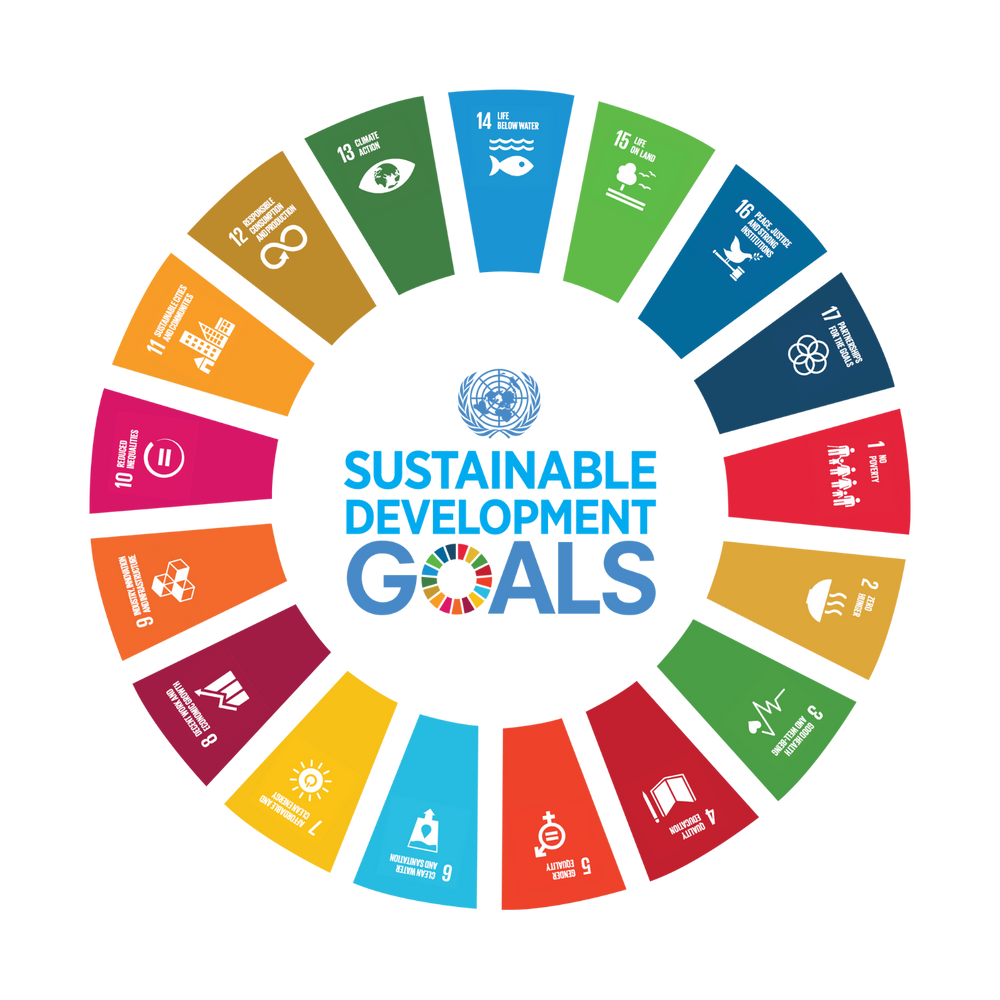
Creating Sustainable Benefits
This project provides living-wage employment and training opportunities for the local community, empowers gender equity, protects the area from increased climate change impacts, and safeguards critical habitats for several vulnerable species. This in turn drives all of the other Sustainable Development benefits produced by the project.
Key Impact Metrics
- 60,000 mangrove propegules have been planted
- 435,600 sq-ft restored
- 5 species of high conservation value protected
- Provides living-wage employment to the local community.
- 17 women and 7 men trained in project management and monitoring.
- 250+ inhabitants of El Dátil have benefited from this project both directly and indirectly.
- Protects local areas and communities from sea-level rise and increased storm surges.
- Safeguards critical gray whale nursery habitat.
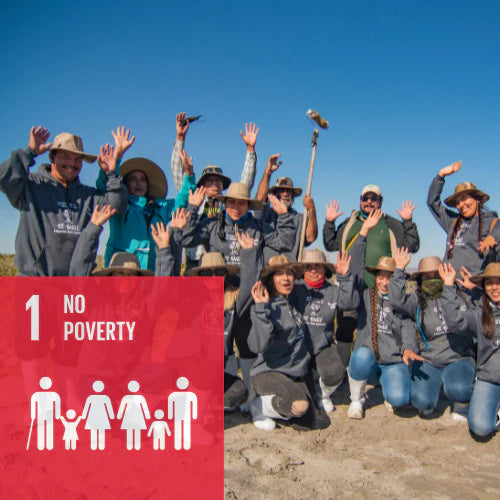
No Poverty
The families and communities of the Laguna San Ignacio area depend on the local ecosystem for income and survival. Recently, climate change and its increasingly intense tropical storms and sea-level rise pose emerging threats to this region. In partnership with WILDCOAST, this project has created several paid jobs and training opportunities for local communities, allowing for an increase in stable income in the region and potential for future expansion.
This project creates jobs and a stable income in a remote area without municipal services and
limited economic opportunities. Additionally, the local community is provided with training and capacity building to develop conservation projects and create job opportunities through programs financed by the protected area.
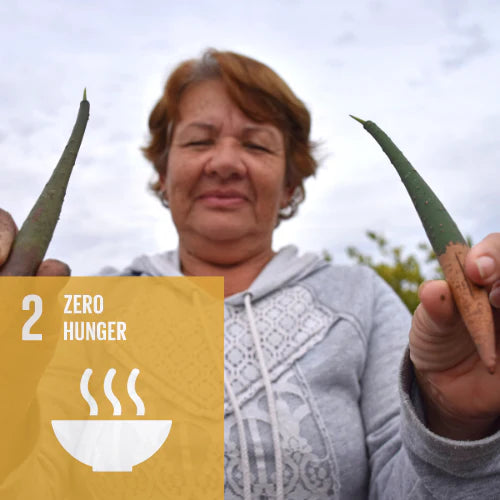
Zero Hunger
The communities of the Laguna San Ignacio area are active fishing cooperatives, whale watching outfitters, and small-scale ranchers, all relying primarily on the surrounding ecosystem for food sources. The mangroves planted through this project will provide nurseries and feeding grounds for commercially important fisheries and other wildlife, both of great economic value, which sustain food and income for the local communities.
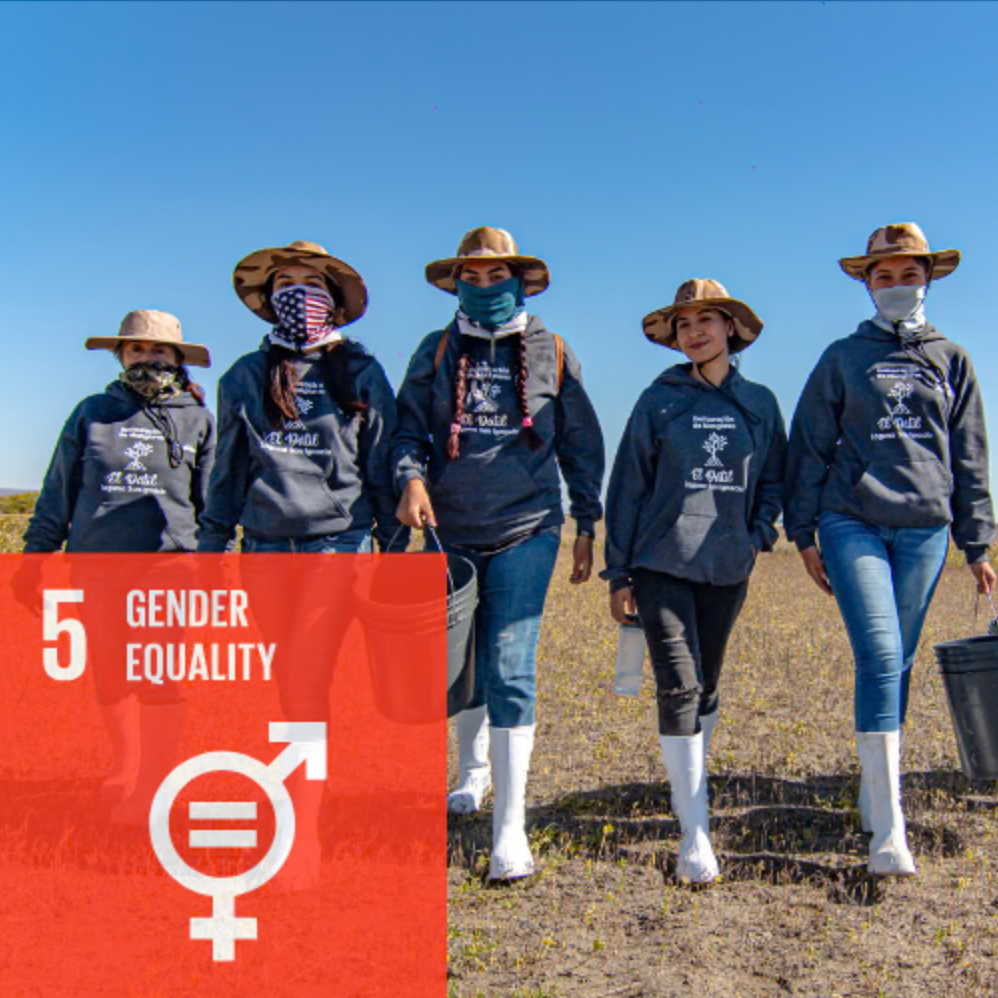
Gender Equality
Gender equality is a fundamental goal of this project. With the support of SeaTrees, WILDCOAST is working with women in Laguna San Ignacio to plant 40,000 mangroves over 25 acres of tidal zones. This will allow local communities to mitigate climate change while creating a habitat suitable for fish, shellfish, and other important wildlife.
The Laguna San Ignacio project is led by a group of 11 women trained in mangrove restoration and responsible for conducting all related activities, including mangrove seedling collection, planting, boat operation, and project monitoring. This will also build and increase these women’s capacities to manage the project, train others, and develop communication skills to advocate for themselves and their community for future generations.
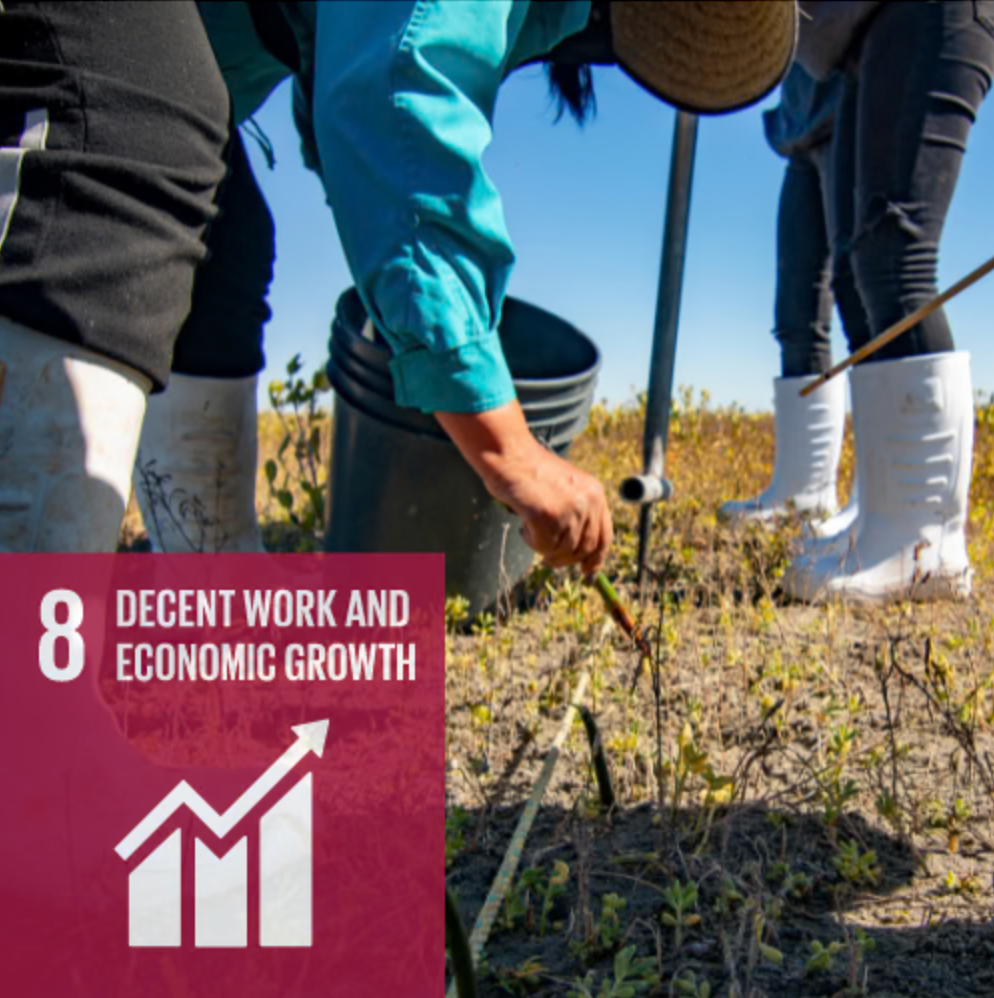
Decent Work
Laguna San Ignacio is a UNESCO World Heritage Site located within the El Vizcaíno Biosphere Reserve, a 6.2 million acre natural protected area, and is home to mangrove forests essential to sustaining fisheries in the area. These mangrove forests play a significant role in the region’s local economy, as local communities rely predominantly on fishing to generate income and a food source.
Through this project, local community members obtain living-wage employment to carry out mangrove restoration activities and support commercially important local fisheries through mangrove coverage expansion.
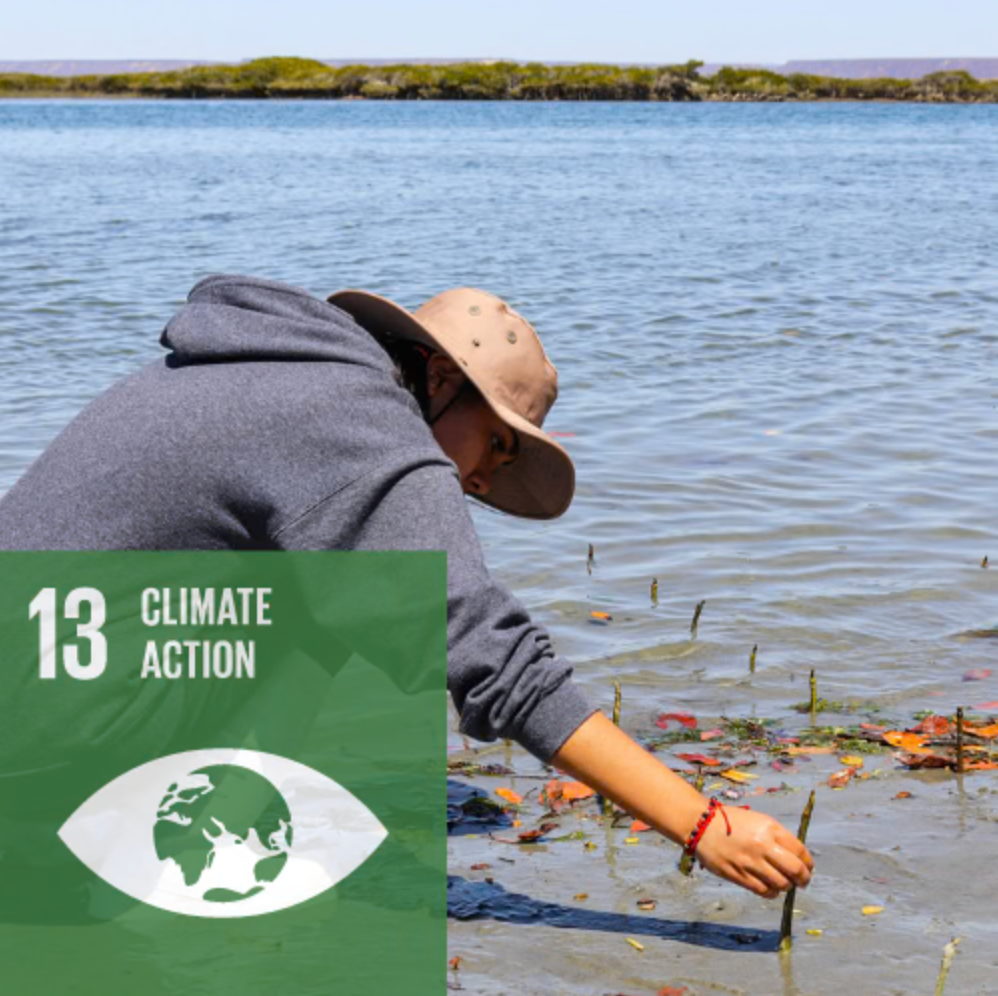
Climate Change
Coastal communities in Laguna San Ignacio have historically faced detrimental impacts of climate change through increased storm surges and sea-level rise, flooding the area each year. Through this project, WILDCOAST is educating community members about the threats of climate change and the benefits of mangrove restoration towards mitigating and adapting to those impacts.
Additionally, the local community will be trained in monitoring practices to estimate mangrove survival rates and conduct maintenance to ensure the project's long-term success and restoration effort. Overall, this project will plant 40,000 mangroves over 25 acres of tidal zones, sequestering large amounts of CO2.
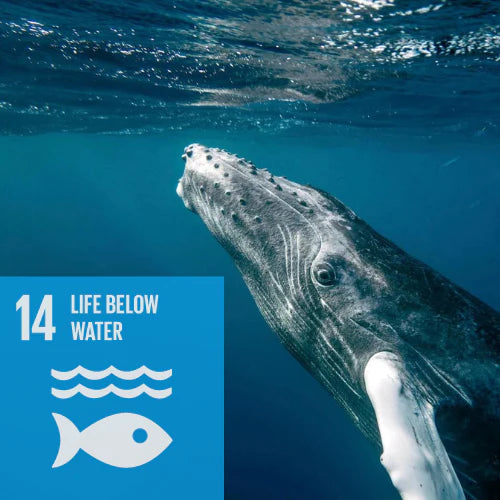
Life Below Water
The mangrove forest in Laguna San Ignacio is a critical nursery for various species of great economic value, including mussels, cockles, clams, shrimp, and fish that use the mangroves as a breeding grounds. Several of these species will be directly harvested from the red mangroves being restored.
Laguna San Ignacio is also home to one of the world’s last three undeveloped California gray whale reproductive lagoons. This project and all related restoration activities will ensure the success of the local ecosystem while also safeguarding this critical birthing habitat for years to come.
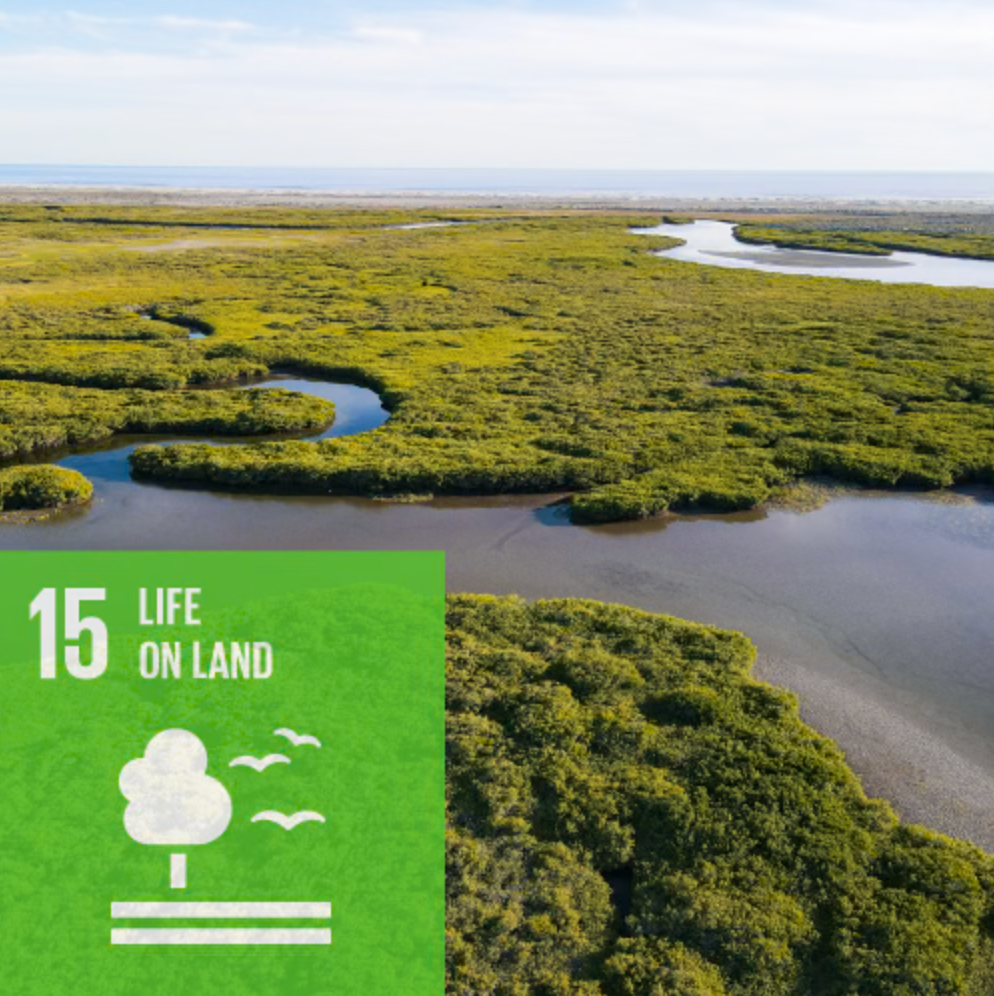
Life on Land
Prior to this project, Laguna San Ignacio faced direct threats from storm surges and increased sea-level rise. These threats would only have worsened, and critical coastal habitats would have been significantly degraded if these mangrove forests were not restored and used as a buffer against climate change impacts.
Together, SeaTrees and WILDCOAST will plant 40,000 mangrove trees across 25 acres of mangrove habitat with the help of local community members. This project will work to contribute to reversing climate change while safeguarding both marine and terrestrial biodiversity.
